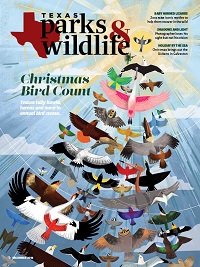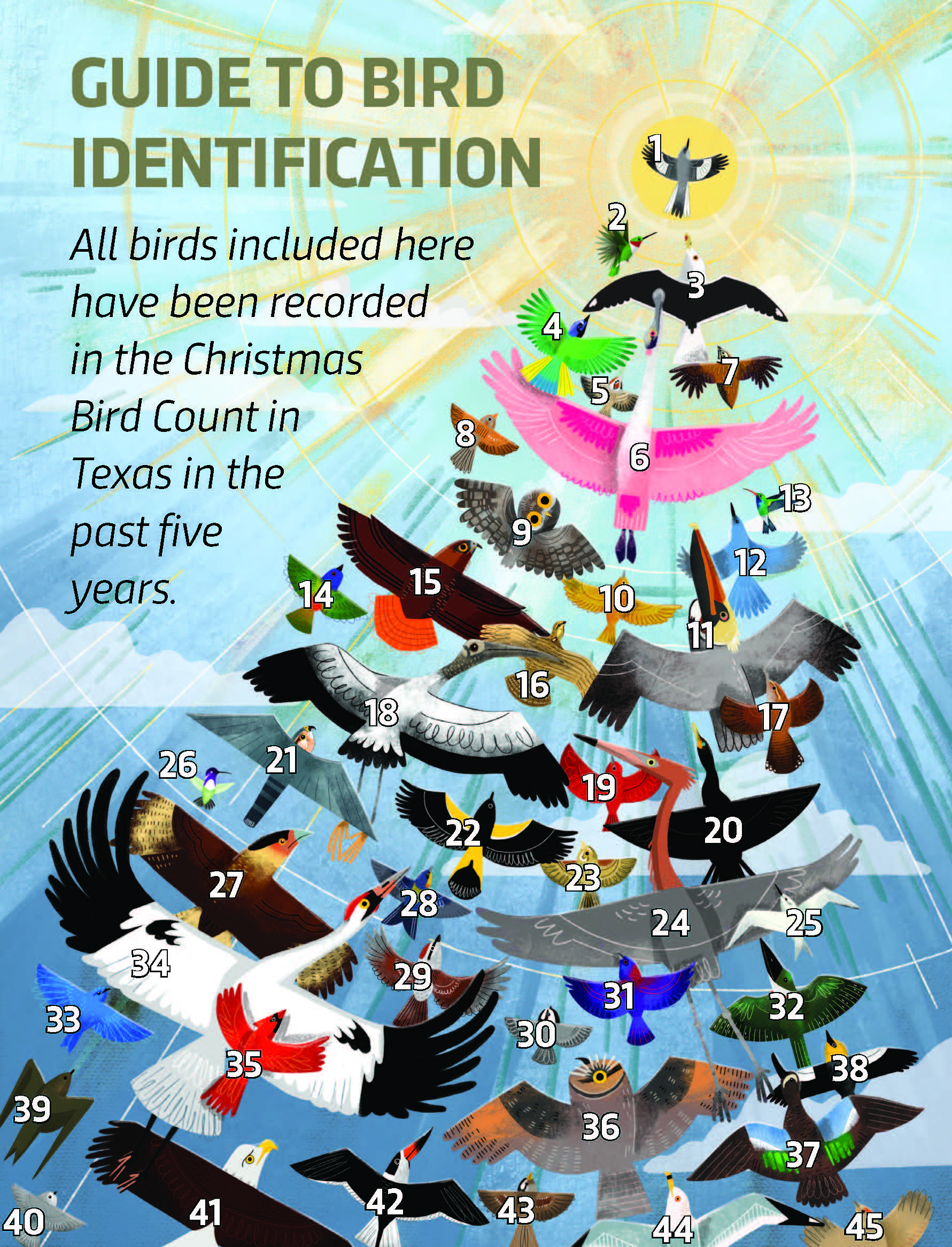
Identifying Birds
Bird-watching is supposed to be an “easy” outdoor activity. After all, being located along the migration flyway gives Texans the ability to see many species of birds in rather ordinary places like megastore parking lots,
city landfills and even our own backyards.
What adds that special magic to merely looking at birds is the thrill of being able to identify them by name. Who doesn’t long to call out with confidence — “Eastern meadowlark. Painted bunting. Crested caracara. Woodhouse’s scrub-jay.” — and know whether it’s a rarity or a native and some fun facts as well?
In these days of self-education, you can utilize anything from a huge Audubon coffee table tome of every bird in the world to a handy paperback field guide tabbed by color to the “in your pocket” convenience of a smartphone app. (Cornell Lab’s free Merlin app is popular.) Even those helpful references can prove confusing to budding birders who really need to identify only a dozen familiar birds or so.
So, before you grab your binoculars and head to the field, learn to better identify birds by narrowing down the options in a few easy steps.

Click to Access the Key!
Shape/Size/Family
All 800 species belong to 82 families, like songbirds, waterfowl, woodpeckers and more. For example, if a bird’s size is smaller than a cardinal and its shape is round-ish with short legs and beak, that might very well indicate that it’s a member of the songbird family.
Habitat/Behavior/Season
If you’re seeing a bird on the beach, high in a tree or burrowing into a tree trunk, or a large flock of birds you don’t usually encounter except in the spring, you can narrow down the possibilities based on the time and place of the sighting.
Field Marks
If you’re lucky enough to get a long, up-close look, try to notice eye rings, bars on wings, speckled breasts and other field marks.
Voice
Who doesn’t know an owl when they hear it? Can you imagine the soft coo of the dove, the harsh caw of the crow or the distinctive song of a warbler? Plenty of apps can help with that.
» Like this story? If you enjoy reading articles like this, subscribe to Texas Parks & Wildlife magazine.
Related stories

